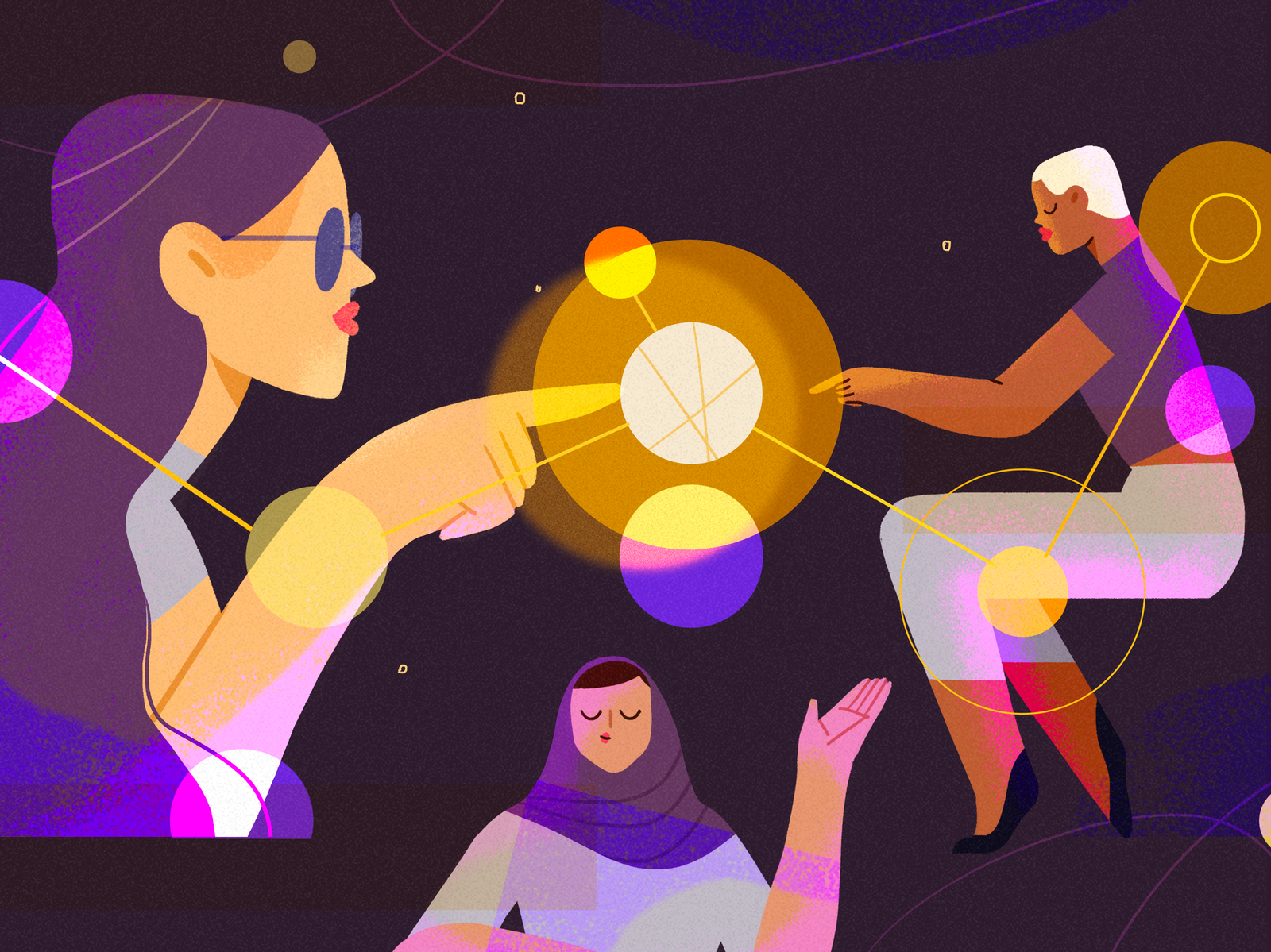You’ve probably heard the term NFT, or Non-Fungible Token thrown around a lot lately. But what exactly does it mean, and as a designer, why should you care? In this article, we explore what NFTs mean in the context of digital art, plus, what it takes to make money with NFTs. Let’s get straight into it!
What is an NFT?
Simply put, an NFT, or Non-Fungible Token, is a unit of currency stored on the blockchain that contains a unique digital file (e.g. images, audio, video, games, etc.).
When you buy an NFT, the digital content can still travel freely through the internet, but you own the “real” original file. The more hype this piece of digital content gets, the more value the NFT accrues.
Fungible vs. Non-Fungible
Before diving further into how NFTs work, it’s worth understanding the difference between fungibility and non-fungiblity.
A fungible asset is an asset that can be exchanged (or substituted) with similar assets of the same value. Currency is fungible, for example. The value of a $100 dollar bill will stay the same if you exchange it for five $20 dollar bills.
Unlike currency, non-fungible assets are unique and can not be interchanged. A classic example to illustrate non-fungibility is the famous Mona Lisa painting. There is only one original Mona Lisa housed at the Louvre—but there are thousands of prints for sale on the market. Of course, a Mona Lisa print does not hold the same value as the original portrait. The original portrait is considered to be a non-fungible asset as it is unique and can not be interchanged.

How NFTs work for digital creators
Traditionally in the art world, once a physical piece is sold, the artist no longer receives revenue from its future sales. However, when you sell a digital file through an NFT, you continue to make money long after that first transaction. As the original creator of the digital asset, you get a cut from every future sale of that NFT.
The concept is similar to royalties with the main difference being that NFTs can be automatically tracked and reconciled using the blockchain with no third-party required. With NFTs, this royalty is automatically collected and distributed on every sale through the decentralized blockchain.
Ultimately, NFTs allow digital artists to create scarcity for their creations, track future sales on that artwork, and share in the future value created.

How to get started using NFTs
If you’re a graphic designer, you might be wondering how you can start turning your digital creations into sought-after NFTs. What does the process look like for creating (or ‘minting’) an NFT, and how much will it cost you?
First, you’ll need to have ETH (the cryptocurrency used for all transactions on Ethereum) and set up an ethereum wallet. Then, you’ll need to do some research on NFT marketplaces to choose the right platform based on the kind of digital assets you plan on selling.
Once you’ve chosen your platform, the cost of minting an NFT will typically range anywhere between $70 - $100. If your NFT sells, however, you’ll be charged an additional “gas fee” which tends to fluctuate greatly.
Once you’ve minted an NFT, you determine the starting price and how much in royalties you want to receive. Then, it’s up to you to promote your NFT online with a ‘drop’ and wait for the bidding war to begin.

Why would someone buy an NFT?
People have long been able to buy tangible collectibles like paintings, sports memorabilia, vintage cars, etc. And if you’re a buyer of collectibles, you’ll typically pay middleman experts to verify the authenticity of these pieces of work.
NFTs are essentially the digital equivalent of collectible items. With NFT’s, the blockchain serves as a built-in verification system where an item can be instantly traced back to its origin. Because NFTs are able to create digital scarcity, they are able to tap into a buyer’s desire to collect—something that was previously unavailable (or unverifiable) for digital assets. Plus, they can also be used as a store of value that potentially grows over time.
Are NFTs here to stay?
Ultimately, NFTs seem to be helping digital creators solve an age-old problem: creating value around digital assets that could otherwise be easily reproduced and shared on the internet an infinite amount of times. Thanks to blockchain technology and NFTs, digital creators now have an easy, simplified way to automatically keep track of and distribute money owed.
While many are excited about the prospect of making money with NFTs, others skepticize whether it’s simply another cryptocurrency fad that will eventually become irrelevant. Will NFTs give new meaning and significance to digital art? Maybe, as long as collectors are willing to continue buying them. Only time will tell. ■
Find more Community stories on our blog Courtside. Have a suggestion? Contact stories@dribbble.com.








